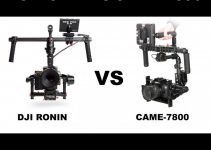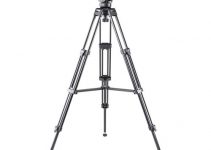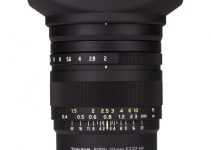Obviously, DaVinci Resolve 12 is a powerful software suite and an extremely efficient colour grading and editing solution, but before we jump on the next post-production technique I would like to share a few thoughts and considerations on whether it’s worth switching to the software for editing purposes only as it’s already a highly discussed topic in the 4K Shooters community.
First off, I tend to agree that both Premiere Pro CC and DaVinci Resolve 12 can provide similar results when it comes to either basic or more advanced editing. The significant difference between both platforms and the workflow they provide, though, is based on which other software apps you would utilise in conjunction with each of the apps.
For instance, if you predominantly use Adobe After Effects and you’re extremely used to moving your projects in Adobe software ecosystem, then you definitely should stick to these post-production solutions. However, if After Effects isn’t an integral part of your daily workflow and your work is related mainly to editing and color grading than Resolve 12 can be a great all-in-one solution for you.
With these considerations in mind, let’s continue with the following tutorial produced by Learn Color Grading.
As shown in the above example, removing different unwanted skin blemishes in Resolve 12 is almost as easy and a simple as removing those from still images in Photoshop. The first thing you need to do is pick a Power Window and place it over the blemish that you want to remove. Then in the Primaries Wheels you have to reduce the Midtone Detail and also increase the Blur Radius to the point where the blemish disappears.
If the footage is tricky to track and there are more complicated movements involved in the frame you have to track the spot combining a few different techniques. For instance, if the spot that you are trying to track at some point disappears from the frame DaVinci won’t be able to provide enough tracking data by using only the automatic forward and backward tracking.
So you need to gather the missing tracking data manually moving the tracker by yourself. But before you do that make sure that you’ve selected Frame rather than Clip mode. Otherwise, you will simply lose the tracking data that DaVinci Resolve has already gathered on its own.
Finally, switch off the window, play back the clip and make sure that the blemish is no longer visible on your talent’s face. If there are any other unwanted spots that you want to remove you need to apply the same technique by creating different window for each spot. The final step of the process would be to smooth out the skin of your talent by utilising a new Node where you are going to select the entire area of the face that you want to smooth out.
Go to Qualifier tab, make sure that you’ve also selected the Highlights mode and click multiple times on different parts of the face while you manage to select everything that you need. Again you can use the Primary wheels and by reducing the Midtone Detail you can smooth out the face of your talent as much as you want.
There you go! Now you know how to remove small wrinkles and other imperfections from you talents’ face by utilising only the available tools of DaVinci Resolve 12. If you have other technique in mind, or you have some recommendations, share with us in the comment section below.
[source: Learn Color Grading]
Disclaimer: As an Amazon Associate partner and participant in B&H and Adorama Affiliate programmes, we earn a small comission from each purchase made through the affiliate links listed above at no additional cost to you.
Claim your copy of DAVINCI RESOLVE - SIMPLIFIED COURSE with 50% off! Get Instant Access!





